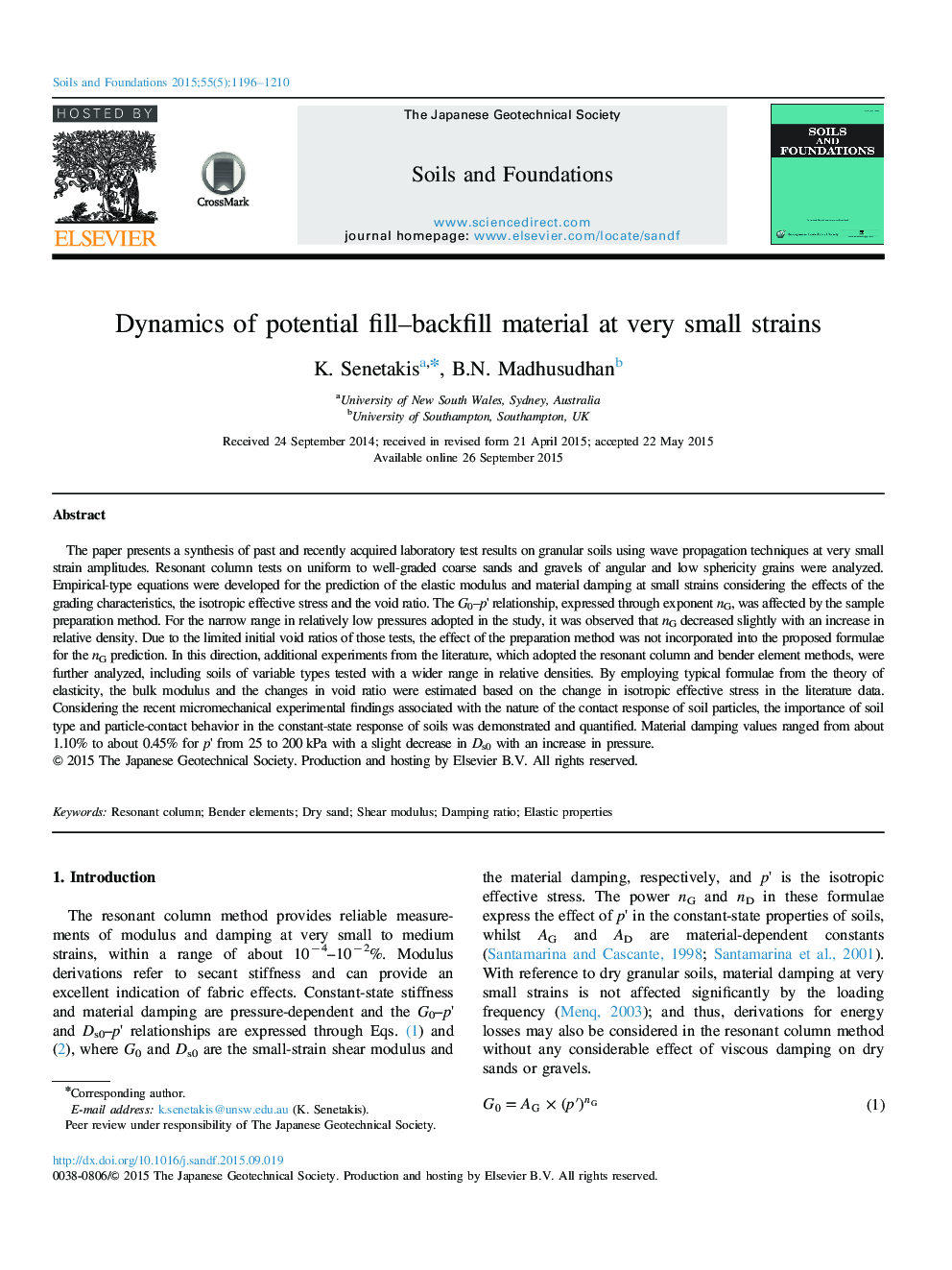| Article ID | Journal | Published Year | Pages | File Type |
|---|---|---|---|---|
| 307099 | Soils and Foundations | 2015 | 15 Pages |
Abstract
The paper presents a synthesis of past and recently acquired laboratory test results on granular soils using wave propagation techniques at very small strain amplitudes. Resonant column tests on uniform to well-graded coarse sands and gravels of angular and low sphericity grains were analyzed. Empirical-type equations were developed for the prediction of the elastic modulus and material damping at small strains considering the effects of the grading characteristics, the isotropic effective stress and the void ratio. The G0-p' relationship, expressed through exponent nG, was affected by the sample preparation method. For the narrow range in relatively low pressures adopted in the study, it was observed that nG decreased slightly with an increase in relative density. Due to the limited initial void ratios of those tests, the effect of the preparation method was not incorporated into the proposed formulae for the nG prediction. In this direction, additional experiments from the literature, which adopted the resonant column and bender element methods, were further analyzed, including soils of variable types tested with a wider range in relative densities. By employing typical formulae from the theory of elasticity, the bulk modulus and the changes in void ratio were estimated based on the change in isotropic effective stress in the literature data. Considering the recent micromechanical experimental findings associated with the nature of the contact response of soil particles, the importance of soil type and particle-contact behavior in the constant-state response of soils was demonstrated and quantified. Material damping values ranged from about 1.10% to about 0.45% for p' from 25 to 200Â kPa with a slight decrease in Ds0 with an increase in pressure.
Related Topics
Physical Sciences and Engineering
Earth and Planetary Sciences
Geotechnical Engineering and Engineering Geology
Authors
K. Senetakis, B.N. Madhusudhan,
